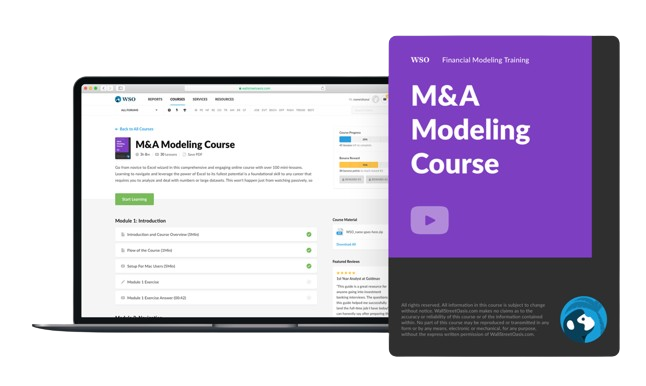Forward Integration
A business strategy that includes a form of vertical integration
What is Forward Integration?
Forward integration is a business strategy that includes a form of vertical integration in which the company owns and controls the businesses ahead in its industry's value chain.
This may include, among other activities, direct distribution or supply of company products.
For example, a ski equipment manufacturer opens stores in several ski resorts to provide customers with a brand experience to boost their brand image and familiarity, as well as direct interaction with customers.
Myntra, an e-commerce startup, launches its own logistics service, Myntra Logistics, to cut costs, improve turnaround time, and serve customers on time.
To avoid relying on a network of partners to assist consumers in adopting its goods, a software corporation establishes its own consulting and software development services.
A company that implements forward-integrated strategies when it wants to gain broader control over the industry value chain, optimize economies of scale, and aim for a better cost structure, thereby increasing market share and profitability of the company
Key Takeaways
- Forward integration is a vertical integration strategy where a company owns and controls businesses ahead in its industry's value chain, such as direct distribution or supply of its products.
- Companies like Ski equipment manufacturers and e-commerce startups use forward integration to enhance brand experience, optimize operations, and interact directly with customers, improving market share and profitability.
- Forward integration controls businesses ahead, while backward integration focuses on suppliers, both aiming for efficiency and reduced costs.
Understanding Forward Integration
This is an operational strategy undertaken by a company that wishes to increase control over its suppliers, manufacturers, or distributors to increase its market power.
For this forwarding integration to be successful, a company must take ownership of other companies that have been customers. This strategy differs from backward integration, in which a company tries to increase ownership of companies that were once its suppliers.
The rise of the Internet has made integration easier and a more common approach to business strategy. For example, a manufacturer has the option to create an online store and use digital marketing to sell its products.
Previously, he had to rely on retail companies and marketing agencies to sell products effectively.
The goal of integration forward in its value chain is to streamline operations, have higher pricing power, and have better overall vertical integration.
Standard industries are made up of five stages in the supply chain: raw materials, intermediate goods, manufacturing, supply & distribution, marketing and sales, and after-sales service.
If a company wants to integrate forward, it must move up the chain while retaining control of its current operations – its original place in the chain.
Phases of Forward Integration Strategy
To understand transition integration, you need to know the stages of the manufacturing process. There are five monetization stages to make a profit from production, and one to five companies manage each step:
1. Raw materials
In this stage, a company produces the raw materials needed to create our product. For a wooden swing, a logging company supplies a sawmill with wood, which then creates the wood planks needed to build the set.
2. Manufacturing
The combination of raw materials to make a marketable product occurs during production. For swing sets, a manufacturer cuts, dyes, and treats wooden boards and then packages them into kits to create swing sets.
3. Distribution
A distribution company ships finished products from its manufacturers to retailers. A shipping company receives swing sets from the manufacturer and ships them to various retail stores.
4. Retail
The consumer may purchase the final product from a retail store. Each store that receives a shipment of swing sets can list them for sale at a markup, which means they price the kit more than they paid.
5. After-sales Services
Providing additional services, such as installation, maintenance, and warranties, can earn extra money from a product. A retail store that sells swing sets may offer the option to add value for an additional cost, such as a store representative building the swing set for the consumer.
Any company in production can practice this kind of integration by assuming control of the steps below in the list. For example, a retail company that provides after-sales services or a materials manufacturer that starts production with raw materials with forward-integrated practices.
Benefits of Forward Integration
This is a strategy enforced by companies to gain rights to business conditioning that are ahead of the value chain. It is a type of perpendicular integration.
The company is reaching the coming situations of the distribution chain with the end of adding up all its conditioning in the unborn value chain.
An association can integrate forward by acquiring or incorporating with business associations that were guests of that association. This is sometimes referred to as "cutting out the middleman."
Advantages of forwarding integration are:
1. Synergize operations and increase profit
The ultimate goal of forwarding integration is to gain power and ownership of their value chain forward. This provides the company with greater control over its distribution chain.
The key advantage will be to synergize the overall activities to improve sales and profit.
2. Raising barriers to entry for new challengers.
It allows companies to take control of their distribution networks. This means that the company can do product and distribution at the same time within its own company.
The entire operation, from product to delivery, will be optimized and more controlled. This will be a common threat for outside challengers to contend with a company like this.
This integration strategy optimizes the entire process from production to distribution. This will eventually help businesses reach different topographies snappily with lower dependence on other industries. The company's request share will be increased.
4. Greater competitive advantage
Forward integration reduces distribution costs. This will lead to a lesser competitive advantage for companies over their challengers. The main competitive advantage will be lesser control over their distribution network and lower dependence on other companies.
5. Reduce costs and increase gains
The functional solidarity of forwarding integration will reduce the company's distribution costs. The company can dissect ways to reduce costs because, in the distribution chain, control is available. This will boost the company's earnings.
6. Gain more control over the distribution network
Before integration moved forward, the company had to depend on another company for distribution. It would be a lower controlled operation since the distribution is handled by another company.
But with forwarding integration, you'll have further control over your distribution network with more minor external dependencies.
Risks of Using Forward Integration
While there are many reasons to choose a forward integration plan, it's important to consider the downsides to determine if it's the right choice. Some of the more consequential considerations include:
1. Failure to achieve synergies
At times models and projections fail, and synergies are not achieved; instead, the acquisition becomes a dead weight on the company books.
It is important to consider all possibilities before trying to integrate forward.
2. High costs
The company must maintain the two companies after forwarding consolidation. This is the parent company with the original company and the integrated company. If not managed properly can lead to higher costs for the whole operation.
Businesses should carefully analyze whether the benefits of forwarding integration outweigh its costs.
3. Substantial capital requirements
It requires substantial capital. The main financial requirement is to acquire or merge with the company to further enhance the value chain. In addition, there will be costs involved in the first months or years after the downstream integration process to optimize business operations.
4. Human resource problems
Even if the integration makes sense financially, the work culture of the two firms may not be able to function together, causing an efficiency issue. There should be relevant contingency measures for a situation like this planned by the firm.
5. Less focus on the original business
The management may lose focus of their original operation while integrating a new vertical. This is possible because it is a lot of work to integrate vertically, and if the right talent is not hired, it can increase the management burden and shift their focus.
Backward Integration
Companies often use referrals as a way to take over part of a company's supply chain. A supply chain is a group of individuals, organizations, resources, activities, and technologies involved in the production and sale of a product.
The supply chain begins with the delivery of raw materials from the supplier to the producer and ends with the sale of the final product to the end consumer.
Backward integration is a strategy that uses vertical integration to increase efficiency. Vertical integration occurs when a company includes several segments of the supply chain to control part or all of the company's manufacturing processes.
Vertical integration can help a company control the distributors that ship their products, the retail stores that sell their products, or in the case of reverse integration, inventory and suppliers. Their raw materials.
In short, reverse integration occurs when a company begins to reverse vertical integration in the supply chain of its industry.
For example, a coffee company, to obtain good quality cocoa, would invest in the purchase of cocoa plantations and production of its coffee. Likewise, a furniture company buys forests for its furniture.
This type of upstream movement in the supply chain is called backward integration. It is called backward integration because you are moving backward in the value chain. This can benefit businesses and reduce their dependence on suppliers.
Companies can obtain raw materials at a reduced cost. Benefits can be passed on to consumers by reducing prices. This can increase their sales, and ultimately their business results will be much better and their market position more stable.
Overall, the company has better control over its business. In addition, reducing reliance on suppliers also ensures a quick supply of raw materials and minimizes quality problems, giving companies more opportunities to innovate.
Advantages and Disadvantages of Backward Integration
The backward integration method will bring many benefits to the corporation, such as saving costs, increasing revenue, and improving efficiency within the production process. In addition, it's a technique to gain a competitive advantage and raise barriers to entry.
Backward integration is often capital intensive, which suggests it often requires a large sum of money to purchase part of the supply chain. For example, if a corporation needs to purchase a supplier or a manufacturing facility, it's going to need to take on a lot of debt to achieve reverse integration.
Let's briefly discuss the pros and cons of backward integration.
Some of the benefits include:
1. Profitable: Profit margins decrease when this happens, resulting in lower raw material and input costs and hence higher profitability or lower prices to benefit consumers.
2. Control: This allows for greater control over the supply chain and thus leads to greater efficiency and less dependence on third parties. This impacts delivery schedules and inventory planning in line with production requirements.
3. Competitiveness: As enterprises grow stronger after integration, competitors have very little chance of entering this market due to the size of the business. As a result, the company can achieve a greater competitive advantage and higher profits.
4. Technology Acquisition: When companies integrate, they acquire the other company's internal technology, and thus they achieve the same. They can then create new business areas by opening this technology to the market.
5. Confidentiality: As most of the supply chain is integrated, the possibility of information leakage, such as trade secrets, etc., is very low. Therefore, a high level of security is maintained.
The disadvantages include:
1. Higher fixed investment: the investment required for such integration is vast, and therefore it is not always an option for both companies therefore, it is a niche option that large companies can only use.
2. Problems of scale: Sometimes, the scale is so large that businesses cannot manage it effectively. This leads to a size disadvantage, and therefore it is not always advisable to embark on the integration of any kind.
3. Complacency: Due to the lack of competition among suppliers, suppliers can become very complacent in improving the quality of the products they produce due to the level of safety they achieve.
4. Anti-trust Action: Sometimes, competition laws come into force when such integration takes place, and to complete the integration, the company may have to give up some assets.
This leads to the emergence of a trade-off between a more profitable integration or owning an existing asset base. Therefore, decision-making has to be very holistic and requires several different perspectives before doing it the same way.
5. Time-consuming: The process is not very fast, and so many hours of work are spent doing the integration and running it to the point where it runs efficiently and independently. It was a tedious task.
Forward Integration VS Backward Integration
Now that we've covered both sorts of integration strategies let's look at how they differ in a nutshell.
-
It is where the company takes control of business activities that are ahead of the value chain. Backward integration is where a company takes control of businesses that fall behind in its value chain.
-
During forward integration, the company acquires or merges with a distributor. The company acquires/merges with a supplier or manufacturer during reverse integration.
-
In forward integration, enterprises take control of the supply chain. In backward integration, businesses take control of the supply chain.
-
The main objective of forwarding integration is to gain a larger market share. The main goal of backward integration is to achieve economies of scale.
-
Forward integration example: A FMCG company acquires or establishes a distribution company. The company can now have full control over its distribution process.
-
Backward integration Example: A clothing company acquires or starts a fabric business. Now the company can have enough materials to make clothes.
The difference between forward and backward integration depends on whether the corporation integrates with a manufacturer/supplier or distributor/retailer. Aside from that, they share a widely similar structure, merits, and demerits, as both are sorts of vertical integration.
Success in vertical combination always depends on the ability of two or more firms to work together towards a common goal. Partners during a vertical integration arrangement have different levels of bargaining power, and this may even lead to conflicts among them at times.
It has got to be controlled and resolved to achieve increased benefits from the alliance.
The table below depicts the differences between Forward Integration and Backward Integration :
| Criteria | Forward Integration | Backward Integration |
|---|---|---|
| Definition | Forward integration occurs when a company expands its business operations into areas that are closer to the end-users or customers. | Backward integration occurs when a company expands its business operations into areas that are closer to the source of supply or production. |
| Direction of Expansion | Towards the end-users or customers. | Towards the suppliers or production sources. |
| Control | Increases control over distribution and sales channels. | Increases control over the supply chain and production processes. |
| Example | A car manufacturer opening its own dealerships. | A car manufacturer acquiring a steel plant or raw material supplier. |
| Benefits | Better control over the market, higher profit margins and improved customer service and feedback. | Cost savings due to bulk purchasing, assured supply of essential raw materials and Quality control over inputs. |
| Risks | Higher initial investment and risk if the market demand decreases. | Potential conflict with existing suppliers and difficulty in managing diverse business operations. |
| Flexibility | More rigid as changes in market demand might affect the business significantly. | More adaptable as the company can adjust production according to deman |
Examples of Forward Integration
These examples show ways a corporation may use forward integration to make its operations more effective and increase profits:
A) Sportswear manufacturer
A sports manufacturer creates athletic gear for a spread of sports. Under the present business model, it sells its products to sports retailers who sell them to consumers at a markup.
After internal discussions, the corporation offers its products to consumers through online retail. In addition, the corporation invests in its web development team to create a digital marketplace on its website.
The company chooses to expand its integration opportunities as well slowly. While assuming retail responsibilities, the corporation continues to contract with a shipping company to manage distribution after sales.
The corporation is still practicing forward integration by entering retail despite keeping distribution under outside control.
B) Farmer
A farmer grows and sells veggies to local supermarkets. The farm already performs upstream integration by growing the next year's crop with seeds from the current crop. However, the farmer decides to increase production control by selling directly to customers.
The farmer offers fresh food with placards designed to attract passing motorists. The farmer also starts going to farmers' markets to offer fresh goods to clients.
By making direct sales, the farmer maintains full profit and sells at a better profit margin on sales through the market. This increases the farm's overall profitability annually.
C) Technology retailer
A technology retailer focuses on selling electronics, including home computers, entertainment systems, and mobile devices, directly to consumers. It identifies a chance to implement forwarding integration by providing after-sale services, like installation and technical support on purchased devices.
The business establishes a new technical assistance department. When selling devices to customers, the corporation offers the opportunity to take advantage of the technology professionals' after-sale services. This new area of monetization increases the typical profit per sale.




or Want to Sign up with your social account?